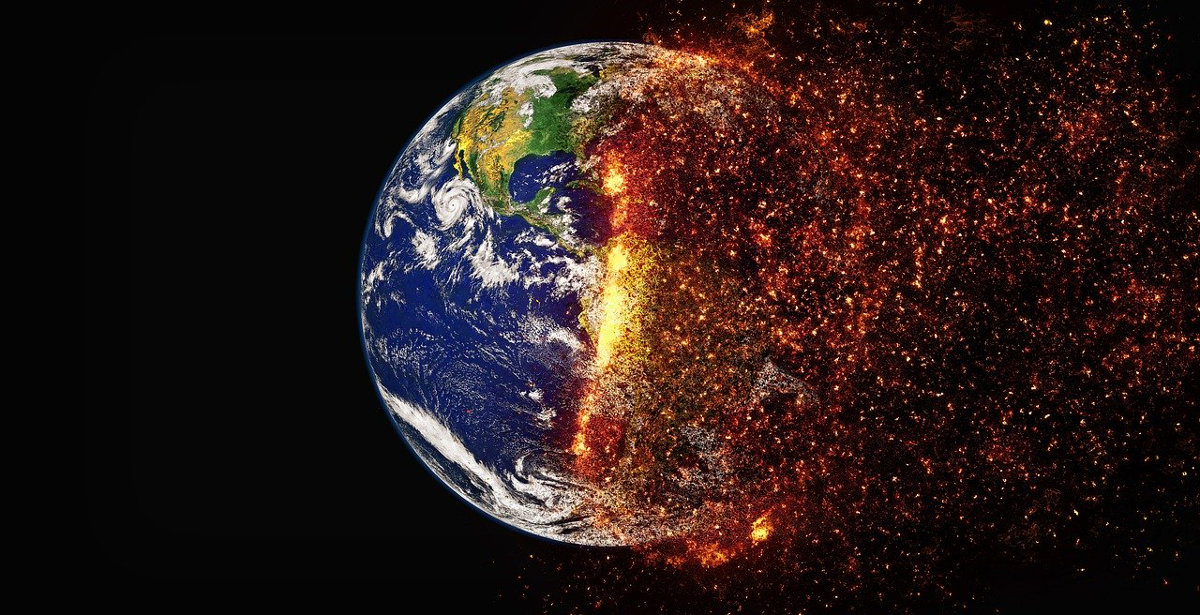The Climate Crisis: A Global Emergency We Can’t Ignore

The signs are everywhere — scorching heatwaves, rising sea levels, melting glaciers, raging wildfires, and more powerful storms. These aren’t distant disasters or isolated events. They are symptoms of a planet in distress. Welcome to the climate crisis — the defining challenge of our time.
This isn’t just about polar bears or ice caps. It’s about our homes, our health, our food, our future. The climate crisis affects everyone, everywhere. And while the science is clear, the path forward depends on what we do now — as individuals, communities, and a global society.
In this article, we’ll break down what the climate crisis is, what’s causing it, how it’s impacting the world, and most importantly, what we can do about it.
What Is the Climate Crisis?
The climate crisis refers to the rapid and severe changes in the Earth’s climate caused largely by human activities. These changes are not part of a natural cycle but are driven by excessive emissions of greenhouse gases (GHGs), particularly carbon dioxide (CO₂), methane (CH₄), and nitrous oxide (N₂O).
These gases trap heat in the Earth’s atmosphere, creating a “blanket” that leads to global warming. As the planet warms, we experience more extreme weather, disruptions to ecosystems, and threats to human life.
According to the Intergovernmental Panel on Climate Change (IPCC), the Earth has already warmed by about 1.1°C since the late 1800s. That might not sound like much — but even a half-degree change can mean the difference between manageable and catastrophic outcomes.
What’s Causing It?
At the heart of the climate crisis is our dependence on fossil fuels — coal, oil, and natural gas — for energy. When burned, these fuels release massive amounts of CO₂ into the atmosphere.
Other major contributors include:
-
Deforestation: Trees absorb carbon. When forests are cut down, not only is this carbon-absorbing power lost, but the carbon stored in trees is also released.
-
Industrial agriculture: Livestock emits methane, while fertilizers release nitrous oxide.
-
Overconsumption: Fast fashion, overproduction, and waste all generate emissions through production and disposal.
Human actions — from the cars we drive to the food we eat — are accelerating the problem.
How Is It Affecting Us?
The impacts of the climate crisis are far-reaching and intensifying. Here are just a few:
1. Extreme Weather Events
More frequent and severe hurricanes, floods, droughts, and wildfires are causing billions in damage and displacing millions of people annually. In 2023 alone, climate-related disasters affected over 50 million people worldwide.
2. Rising Sea Levels
As glaciers and ice sheets melt, and as warmer water expands, sea levels rise. Coastal cities like Miami, Jakarta, and Venice are already seeing regular flooding.
3. Food and Water Insecurity
Droughts and erratic weather disrupt crop cycles and reduce agricultural yields. Water sources are drying up, affecting both drinking water and farming.
4. Health Risks
Heatwaves can be deadly. Air pollution from fossil fuels increases respiratory illnesses. Climate change is also expanding the range of disease-carrying insects like mosquitoes.
5. Loss of Biodiversity
Habitats are disappearing. Over 1 million species are at risk of extinction due to climate change and habitat loss, according to a UN report.

Why Urgency Matters
The window to prevent irreversible damage is rapidly closing. Scientists warn that if global temperatures rise above 1.5°C, the risk of tipping points — irreversible changes like massive ice melt or Amazon rainforest dieback — dramatically increases.
The good news? We still have time. But we must act fast and decisively. That means transitioning to clean energy, protecting forests, rethinking how we grow food, and reducing consumption and waste.
What Can We Do?
Feeling overwhelmed? You’re not alone. But every action counts — and the most powerful changes come when individual choices align with collective action.
1. Reduce Carbon Footprint
-
Drive less: Use public transport, bike, or walk when possible.
-
Eat sustainably: Reduce meat and dairy consumption. Support local, organic farmers.
-
Use energy wisely: Switch to energy-efficient appliances, insulate your home, and turn off unused electronics.
2. Choose Renewable Energy
If possible, switch to green energy providers. Support solar, wind, and other clean energy sources.
3. Support Climate-Friendly Policies
Vote for leaders who prioritize climate action. Advocate for renewable energy investment, carbon pricing, and protection of ecosystems.
4. Educate and Inspire
Share knowledge. Encourage schools, workplaces, and communities to go green. The more people understand, the greater the collective power for change.
5. Consume Mindfully
Buy less. Choose durable, repairable, and sustainable products. Reuse, recycle, and support businesses committed to sustainability.
6. Protect Natural Spaces
Forests, wetlands, and oceans are our planet’s lungs. Support reforestation projects, marine conservation, and nature-based climate solutions.
The Role of Youth and Innovation
Young people are at the forefront of the climate movement. Activists like Greta Thunberg have shown that a single voice can spark a global conversation. Innovation, too, plays a major role. From carbon capture technology to lab-grown meat and sustainable architecture, new solutions are emerging every day.
But innovation isn’t enough on its own. We need systems change — and that starts with awareness, pressure, and action.
Hope Is Not Lost
Amid the daunting headlines and rising temperatures, there is hope. Renewable energy is now cheaper than coal in many parts of the world. Countries are committing to net-zero targets. Individuals, businesses, and cities are stepping up.
Change is possible — but only if we treat the climate crisis like the emergency it is.
